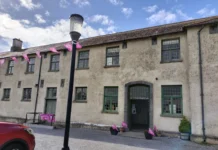Rural life and agriculture in Galway are being overwhelmed by too many forestry developments Galway-Roscommon TD Eugene Murphy is warning.
In Galway, 229 afforestation licences were granted between June 2016 and June this year according to Deputy Murphy, with only eight being refused.
Afforestation involves creating an area of forest where previously there was no tree cover.
An afforestation licence is required from the Department of Agriculture, Food, and the Maine for any forestry development larger than 0.10 hectares.
A licence from the Department is required for any project involving tree felling, aerial fertilisation, afforestation, or forest road construction.
However other than that licensing process forestry operations are not governed by planning permission, leaving the Local Authority with little control over them.
Deputy Murphy is warning that landowners are being crowded in by forestry, “Many rural areas have been inundated with forestry,”
“In some cases homeowners and landowners have been hemmed in on all sides of their property and there is a serious issue with a lack of sunlight.”
Nationally 3,326 afforestation licences were issued in the past three years, while only 93 applications were refused.
The abundance of forestry operations being given the go ahead has been particularly apparent in the west, with Galway, Leitrim, and Roscommon alone accounting for nearly a quarter of all licences issued: Galway (229), Roscommon (291), Leitrim (243).
The high number of developments going ahead in the west is also seen in the fact that of the 93 applications refused in the past three years, 25 were in those three counties.
These figures come from a parliamentary question Deputy Murphy submitted to Minister Michel Creed.
According to Deputy Murphy farmers are also feeling the pinch because: “Large commercial interests or timber companies are buying up large swaths of land for forestry plantations and pricing smaller landowners out of the equation and this is preventing many farmers from being able to extend their farm holdings.”
However the goverment’s midterm review of the 2014 – 2020 Forestry Programme released in February says that the forestry industry currently supports 12,000 jobs in Ireland, mostly in rural areas.
It says that forestry can actually complement agriculture, by having farmers convert the use of land that is unused or unsuitable for crops.
As a tourism and recreational amenity, 18 million people visit Ireland’s forests every year, with the total economic activity created by created by domestic and foreign forest users estimated at €406 million per year.
Climate Change
The 2014-2020 Forestry Programme aims to create 30,000 hectares of coniferous forests, mostly Sitka Spruce.
One of the goals of the forestry programme is too help Ireland meet its climate change targets by increasing our forest cover, which remains very low by European standards.
A hectare of Sitka Spruce can remove roughly 10 tonnes of CO2 equivalent every year.
However, while rapidly growing coniferous forests are ideal for the timber industry, they are not the best suited for absorbing emissions from the atmosphere compared with broad leafed alternatives.
Where afforestation is going ahead, Deputy Murphy believes the government should incentivise alternatives to Sitka Spruce.
“As a former horticulturist, I am not opposed to forestry developments provided that it does not hem in people and their properties. Also I feel that there should be a greater emphasis on broad leaf natives.”
He concluded by saying the government should introduce tax breaks for landowners who lease their land to active farmers to support traditional agriculture.











